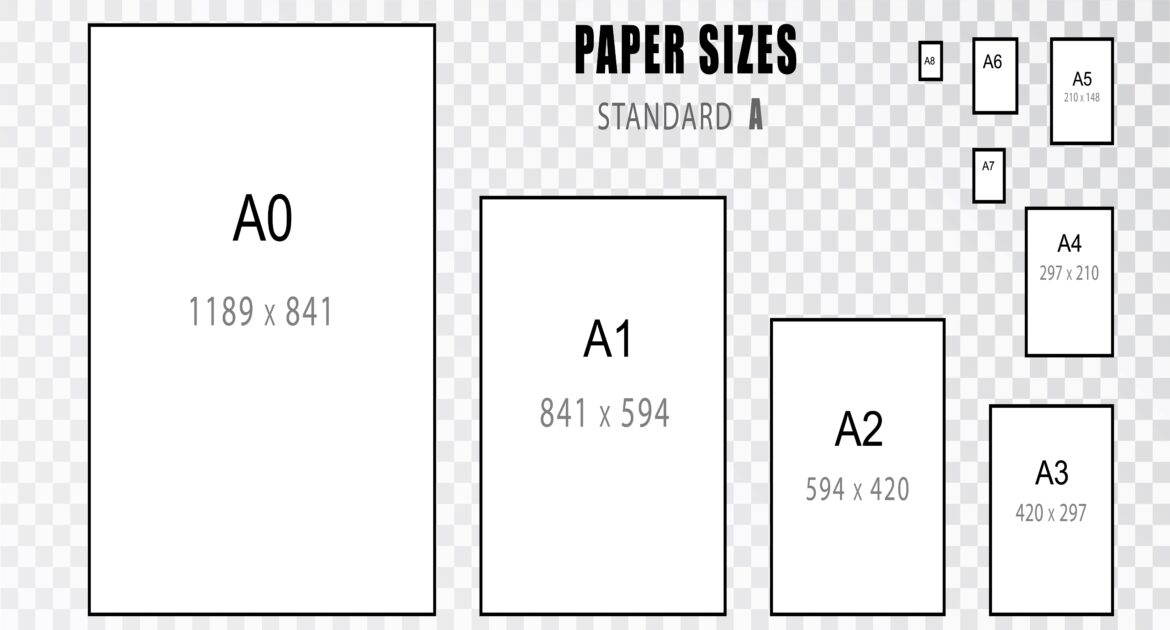Paper is an integral part of our everyday lives. From printing documents to creating artwork, knowing the different paper sizes is essential. In this blog post, we will explore the world of paper sizes, focusing on two commonly used measurements: inches and millimeters. Understanding these dimensions will help you make informed choices when selecting paper for various purposes.
The Importance of Standard Paper Sizes
Standardization is a fundamental aspect of paper sizes. It ensures compatibility across different industries and simplifies processes involving paper, such as printing, binding, and framing. There are several standard paper sizes, with the most common ones being A4, A5, letter, and legal. These sizes have specific dimensions, making them universally recognizable.
Inches vs. Millimeters
Paper sizes are typically measured in inches or millimeters, depending on the region and industry. Understanding both units is essential for global compatibility and flexibility. Let’s delve into the most common paper sizes, with their measurements provided in both inches and millimeters for your convenience.
- Letter Size
The letter size paper is one of the most widely used formats in North America. It measures 8.5 x 11 inches (216 x 279 mm). This size is commonly used for documents, letters, and various printed materials like brochures and flyers.
- Legal Size
Legal size paper is slightly longer than letter size. It measures 8.5 x 14 inches (216 x 356 mm). This format is often used for legal documents, contracts, and other documents that require additional space for content.
- A4 Size
A4 is the international standard paper size and is widely used in most countries except North America. It measures 8.27 x 11.69 inches (210 x 297 mm). The A4 size is suitable for various applications, including printing reports, letters, and academic papers.
- A5 Size
A5 paper is half the size of A4, measuring 5.83 x 8.27 inches (148 x 210 mm). This size is commonly used for notepads, booklets, and smaller documents where portability is essential.
- A3 Size
A3 paper is twice the size of A4, measuring 11.69 x 16.54 inches (297 x 420 mm). It is often used for posters, architectural drawings, and marketing materials that require a larger canvas.
- Tabloid Size
Tabloid paper, also known as ledger or B-size, measures 11 x 17 inches (279 x 432 mm). It is commonly used in the United States for newspapers, newsletters, and large-format printing.
- Postcard Size
Postcard-sized paper measures 4 x 6 inches (102 x 152 mm). As the name suggests, it is ideal for creating postcards, invitations, and greeting cards.
- A6 Size
A6 paper measures 4.13 x 5.83 inches (105 x 148 mm). This compact size is suitable for creating small booklets, flyers, and pocket-sized notebooks.
- B5 Size
B5 paper measures 6.93 x 9.84 inches (176 x 250 mm). It is often used in countries like Japan for books, magazines, and catalogs.
- Envelope Sizes
Envelopes come in various sizes to accommodate different paper sizes. Some common envelope sizes include C4 (229 x 324 mm), C5 (162 x 229 mm), C6 (114 x 162 mm), and DL (110 x 220 mm).
Choosing the Right Paper Size
Selecting the right paper size is crucial for your specific needs. Consider the following factors when choosing a paper size:
- Purpose: Determine the purpose of the document or project. For formal documents, letter or A4 sizes are typically preferred, while larger formats like A3 or tabloid are suitable for posters and presentations.
- Content: The amount of content you need to include plays a role in choosing the size. Legal or larger sizes are better for documents with a lot of text or data, while smaller sizes like A5 or A6 are ideal for concise materials.
- Portability: If you require a portable format, opt for smaller sizes like A5 or A6. These are convenient for notepads and on-the-go materials.
- Industry Standards: Consider the standards in your industry or region. For example, in the United States, letter and legal sizes are commonly used, while A4 is the international standard.
- Printing Equipment: Ensure your printing equipment can handle the chosen paper size. Large-format printers are necessary for printing on A3 or tabloid-sized paper.
Conclusion
Paper sizes, whether measured in inches or millimeters, are an essential aspect of the paper industry. Standardization ensures compatibility and ease of use across various applications, from printing to design. Understanding the dimensions of common paper sizes in both units empowers you to make informed decisions and select the right format for your specific needs. Whether it’s for business documents, creative projects, or personal use, knowing your paper sizes in inches and millimeters is a valuable skill that can save you time and resources.
Visit our website at www.printmaxindia.com
Follow us on our instagram handle – https://www.instagram.com/printmaxindia





